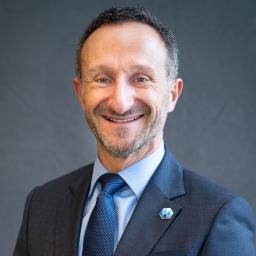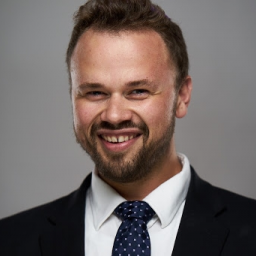By David Zimand, Head of School
Seattle Jewish Community School
My father, Rabbi Ephraim I. Zimand, of blessed memory, loved Pirkei Avot, The Ethics of the Sages, above all Jewish sources. He devoted countless hours to studying it, teaching it and compiling the wisdom flowing from it in big black binders. Just grazing the surface of the text’s depths or of his learning, I have returned repeatedly in my career as a Jewish educator to one short line near the end of the tractate, with appreciation for the guidance and inspiration it packs in just four words presenting a miracle. Over these recent months of great tribulations for the entire planet, I have considered these words once again and wondered if the challenges before us include finding ways to experience the miracle they describe in reverse.
In Avot 5:5, amidst a list of ten wonders our ancestors experienced in the Holy Temple, the text describes worshippers as omdim tzfufim umishtachavim revachim, “standing crowded and bowing at full length.” The expression refers to the atonement rituals of Yom HaKippurim, reporting the marvel that jostling shoulder to shoulder did not preclude those in the congregation from bowing fully prostrate to express their confessions. This is a lovely image and one that lends itself to multiple interpretations, especially by focusing on the single letter u, “and,” to explore different ways we might understand it, along with the words surrounding it.
The Four “Ands”
- In context, arguably the most natural reading is “yet.” The presence of throngs of people should have made bowing impossible, and yet the miracle insured sufficient space where none was apparent. This possibility lends itself to more commonplace applications as well. My father would use these words to encourage my siblings and me to see that there was always room for another person at the table, or that, somehow, we would manage to squeeze all six of us into a small car (before the age of “one seatbelt per passenger”). In more elevated realms, he reminded us that we can transcend perceived limitations, in time and space and visions of what is possible.
- Commentaries also note the sense of “also.” The gathered worshipers could simultaneously experience the power of being together, tightly bound, and also find space for private, deeply personal, supplications. This is another lovely idea, one that conveys the sacred nature of both the community and of the individual.
- Along with simultaneity, “and” can express contrast, “whereas.” Using this approach, we can find a metaphorical, ethical message in the passage: when we stand—backs against the wall, heels dug in—we feel crowded, whereas when we bow, honoring space for others and for their views, we recognize the spaciousness that surrounds us. This approach suggests the precious Jewish notion of machloket leshem shamayim, honoring the value of dispute in the name of heaven, a value that has fallen on hard times in our own era of echo chambers, when we stand divided and in separate camps.
- In a related spirit, “and” can also convey causation, “therefore”: they stood shoulder-to-shoulder, bound together, and therefore—precisely for this reason—they could extend themselves.
Seeing The Miracle in Day Schools
All of these interpretations carry particular power for me as a Jewish educational leader. Indeed, I appreciate how the four variations on the meaning of the letter u in omdim tzfufim umishtachavim revachim express core features of the distinctive powers of Jewish day schools. Our educational institutions strive, with devotion to the next generation, to transcend perceived limitations, advancing the faiths that we can find enough hours in the day for all the riches of our curricula, that we can navigate the financial challenges before us, and that we can secure room for all of the youth in our communities, with the varied needs they present and the distinctive contributions they offer. We strive, in a related spirit, to honor the sacred nature of both the individual and the collective, simultaneously celebrating how good and how pleasant it is for us to sit together, Hinei ma tov uma na’im shevet achim gam yachad” (Psalm 133:1), even as we also hold the conviction that each of us, with our own inestimable value, is created betzelem Elohim (Genesis 1:27), in the image of God.
Day schools, at their best, also carry forward the spirit of inquiry and the proud culture of honorable disputation deeply rooted in our intellectual heritage. In this way, they nurture the pursuit of wisdom beyond mere knowledge, and they offer a powerful alternative, and hopefully antidote, to our contemporary context that has increasingly squeezed opportunities for constructive back-and-forth. Finally, we seek to serve the interest of the future, with the conviction that it is precisely by bringing people together that we make it possible for us to extend ourselves at greater length than we would otherwise have thought possible.
Reversing the Miracle
Of course, these ideals have been sorely tested amidst the protracted global pandemic still before us. If our ancestors experienced the miracle of finding space to bow down the full length of their bodies even as they stood shoulder to shoulder, we seek a “miracle” that shifts the words of Pirkei Avot into reverse. We must be mishtachavim revachim ve’omdim tzfufim: even as we are necessarily socially distanced and reliant on remote communication, we must find ways to keep our communities tightly bound together.
In this reversed framework, schools, other institutions and individuals can still find guidance and inspiration in four different understandings of the letter u, pronounced v in this case, still meaning “and.” Nearly all of us can point to ways that we have experienced the isolation of the pandemic, and yet have registered possibilities for connection that we had underutilized before. I know that my own family, divided between the United States and Israel, has engaged in more regular communication than it had pre-Covid and has recognized in more thoughtful ways the possibilities, despite distances, for shared occasions, like baby namings celebrated across ten time zones.
Thicker communication does not automatically translate into deeper exchange, and here, as the passage from Pirkei Avot reminds us, we need to take care to honor the sacred nature of the collective and also of the individual, at a time when we have gotten too many poignant reminders of how much we need to treasure opportunities for face-to-face, eye-to-eye, heart-to-heart, and shoulder-to-shoulder contact. “Gallery View” can be a wonderful thing, and we also must not let it displace calls to feed the human need for the intimacies of being present for one another as ones, individuals making our way through a global calamity in individual ways.
Our passage, in reverse, again offers a metaphorical, ethical message. If, as a result of circumstances beyond our control, we throw ourselves down—prostrate on the couch perhaps—we will experience distance that much more; whereas, if we pick ourselves up, stand tall to meet the day, come what may, we will have more opportunities to sense the connections that transcend distance. For distance is, in its own way, a limitation. But we have the capacity to be mishtachavim revachim. extending ourselves full length, and therefore, precisely for this reason, we also have the capacity to remain omdim tzfufim, bound tightly together and thus prepared through our collective strengths to meet the challenges of our day and those that will follow.
Experienced day-school leader David Zimand will assume a new position in July as head of school at the Seattle Jewish Community School. [email protected]




